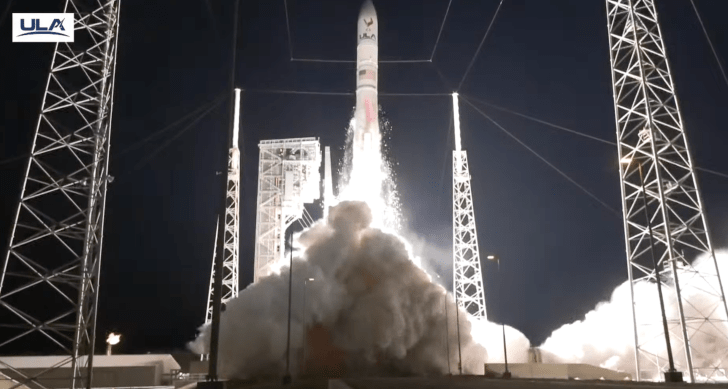It’s hard to understate just how much was at stake in Monday’s early morning launch of United Launch Alliance’s Vulcan Centaur rocket: multiple major reputations, billions of dollars, a new moon lander, the country’s dreams for lunar exploration, brand new rocket engines flying for the first time and what is quite literally ULA’s future.
And ULA pulled it off. The company’s next-generation rocket Vulcan Centaur successfully lifted off in the early hours of Monday, and its primary payload, a lunar lander from Astrobotic, is now on its way to the moon.
The heavy-lift rocket took off from Cape Canaveral Space Force Center at 2:18 a.m. EST Monday. The first stage, which is powered by two methane-fueled BE-4 engines from Blue Origin, separated from the Centaur V upper stage at around 2:24.
Main-engine cut-off on the Centaur took place around T+15 minutes. The Centaur executed two more burns to get Astrobotic’s Peregrine lander on the correct trajectory to the moon. With those complete, the lander, called Peregrine, will now embark on a one-and-a-half month journey to the moon. Peregrine is taking a slightly longer route to the moon, and so will have to execute a handful of complicated burns to maneuver into progressively lower lunar orbits. Eventually, the spacecraft will attempt to land autonomously near a region called Gruithuisen Domes on February 23.
The launch and subsequent journey to the moon are a watershed moment for both United Launch Alliance and Astrobotic. The former company, a 50-50 joint venture between Boeing and Lockheed Martin, is envisioned as the future of ULA. The rocket is designed to replace the Atlas V and Delta IV Heavy, both of which are due to retire.
The rocket is also designed to compete against other launch providers, like SpaceX, by offering a large payload fairing and an adjustable configuration depending on the mission profile. So customers will be able to choose between two payload fairing sizes (51 or 70 feet long) and four standard configurations with zero, two, four or six solid rocket boosters, depending on the mission profile and customer requirements.
ULA has already sold a number of missions for the 202-foot-tall Vulcan, including 38 launches to Amazon to deploy part of its ambitious Project Kuiper satellite broadband constellation. The launch company also won over two dozen contracts with the U.S. Space Force (USSF), though it must complete one more certification launch before it can start fulfilling those launches.
If all goes to plan, ULA could execute that second certification launch, called Cert-2, as early as April. That mission will fly another high-profile, high-stakes payload: Sierra Space’s Dream Chaser spaceplane, which would take a journey to the International Space Station. The remaining four missions on Vulcan’s manifest this year would all be for USSF.
ULA and Astrobotic are not the only ones with something to celebrate: This is also the first time that Blue Origin’s BE-4 engines have seen flight, a triumph that comes after nearly a decade of development. While Vulcan will initially be fully expendable, the eventual aim is to recover the two engines mid-air and reuse them to further drive down costs.
Astrobotic’s Peregrine is also the first lander to fly under NASA’s Commercial Lunar Payload Services (CLPS) program, an initiative to kickstart the development of lunar delivery services from commercial providers. Pittsburgh-based Astrobotic was awarded $79.5 million for this mission in 2019, a cost that was later increased to $108 million; even if it doesn’t manage to stick the moon landing, it’s still a major proof-of-concept for NASA’s ambitious efforts to foster advanced space services from private industry.
Developing…
